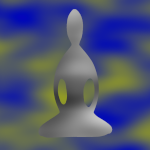Dear Friends,
In the second short talk on the faculty of sati, mindfulness, Gil brings in an element to help with the establishment of mindfulness – “the mind’s capacity to comprehend what is happening, to know what is happening. … This is the ability to clearly recognize what something is.”
https://www.audiodharma.org/talks/11117
The simple recognition that Gil discusses is not analytical or complicated – there is a clarity of what is happening so that we are grounded in what’s present instead of the proliferation of stories that go on top of it.
Sharon Salzberg tells a story of “add-ons in action” from a retreat she was teaching with Joseph Goldstein:
I was teaching with my colleague Joseph Goldstein when a student came to see him in great distress. The man said he’d just had a terrible experience—he was meditating, felt tension in his jaw, and suddenly realized what an uptight person he is, how he can’t get close to anyone, and that he’s going to be alone for the rest of his life. “You mean you felt some tension in your jaw,” Joseph said. The man continued with his projections. He said he was pretty sure he’d always be tense, he’d never change; he felt hopeless. “You mean you felt some tension in your jaw,” Joseph said. I watched the man continue barreling down this path of misery for some time, all because of a sore jaw, until finally Joseph said, “You’re having a painful experience. Why are you adding a horrible self image to it?”
“Working With Pain” by Sharon Salzberg, February 12, 2012
https://www.sharonsalzberg.com/realhappinessblogsharon-salzbergworking-pain/
Gil describes one of the ways to counter this proliferation: “We can start recognizing the details of the moment in a relaxed, open way, without searching or striving — just noticing the simplicity of the in-breath and the out-breath. … we can say, ‘Oh, the inhalation is like this; the exhalation is like this. The weight of my bottom on the cushion is like this. The sound of the traffic is like this.'”
There is a simple tool in meditation that can help the mind stay more focused on the direct experience rather than the add-ons: mental noting. I find this is a very useful practice when I notice that the mind is really revved up and distracted. Noting gives the mind something to do, and helps the mind remember to stay with the simplicity.
Gil says, “This is a beautiful art to learn. It takes a while and is awkward at first. Some people protest too quickly, saying it just makes their mind busy. But it’s like riding a bicycle. At first it’s wobbly and you fall off. It’s awkward. It takes a lot of energy. But once you learn to ride the bike it goes really smoothly, and you can lift your hands off the handlebars.”
Noting isn’t something you have to do, and sometimes it’s not necessary when there is focus and continuity. On those days when you might feel a little scattered, I encourage you to give it a try now and then. Use a very soft, very light touch. I find it really grounding.
Meditation:
I have heard many talks and meditations from Joseph Goldstein, and he often includes the instruction, “sit and know that you are sitting.” I love that instruction, as it points to this quality of simple recognition. Here is a 15 minute meditation from Joseph that walks us through using this knowing capacity with whatever is arising. (No ending bell.)
https://www.dharmaseed.org/talks/2663/
With good wishes,
Andrea
